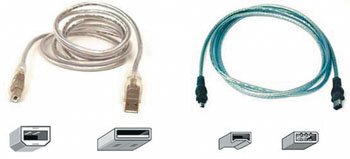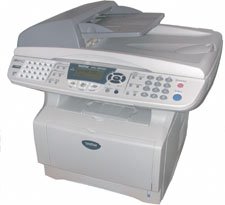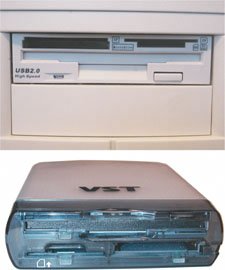Choosing the Right Hardware
| At the center of your technology needs is a computer. Selecting a computer is a key decision, but it's just one piece of your whole technology environment. The rest of this section identifies what you should consider for your technology environment, starting with choosing a computer. Checklist Your Computer system Your basic computer hardware should include the following:
Selecting a PCThe first decision you make when choosing a PC is whether to buy one that runs the Microsoft Windows operating system or the Apple Mac OS X operating system. Although Macintosh PCs are easier to use than Windows PCs, you'll likely choose a Windows PC because some real estate software and some MLS Web sites run only on Windows. If you don't need Windows-specific software, or if the software is Mac-compatible, by all means consider a Mac. (Microsoft also offers software called Virtual PC that runs Windows programs on a Mac, but it's slow, so make sure you test it before relying on Virtual PC as your method for having a Mac and Windows, too.) Whether you buy a new PC or are using one you already have, I'll assume for the examples and recommendations in this book that you're using the Windows XP operating system or the Mac OS X 10.3 (Panther) or 10.4 (Tiger) operating system on it. If you have an earlier version of the operating system, please upgrade it. The newer versions have much better security features, which is critical if you use the Internet. After you select the desired operating system, choose either a desktop PC or a laptop (also called notebook) PC. Desktop PCs are cheaper than laptops, but they're not mobile. Most agents work in several locationsyour home office, the broker's office, and perhaps at open houses, coffee shops, and client sitesso a laptop usually makes the most sense. If you decide to buy a laptop, be sure to get one that has at least a 14-inch screen and 802.11g wireless access built in. I prefer the so-called thin-and-light notebooks, which weight less than 5 pounds, because they're easier to carry and take less room in my computer bag, leaving room for other items. You should also carry an extra mouse in your computer bag (it's easier to use a mouse than the built-in trackpads) as well as an extra power supply and cord. I also recommend a docking station for your home office, because unplugging and again plugging in all the various cables each time you leave or come back to your office is a real pain. A docking station eliminates that problem because all the cables connect to the dock, leaving just one cable for you to mess with between the laptop and the docking station. (Note that not all laptop companies make docks for all their models, so be sure to check that a dock is available for your preferred laptop before making a final decision.)
If you purchase a desktop PC, I recommend that you get at least a 17-inch LCD flat-panel monitor. LCD monitors take up less desk space and are easier on the eyes than the traditional CRT. Quality brands include Philips, Samsung, Sony, and ViewSonic. Whether you buy a laptop or a desktop PC, you need at least 60 GB of hard drive space and 512 MB of RAM (system memory). Processor (also called CPU) speed is less critical, because modern computers handle business computing needs well. Mybest advice is to get a middle-of-the-pack processor, which should last you several years and provide the most bang per dollar spent. The brand of PC you choose also makes little difference these days, since most computers are actually made by a handful of companies, no matter what brand label is on the case. You can safely buy a desktop or laptop PC from Dell Computer, Gateway, Hewlett-Packard, or Sonyor from your local computer store that builds its own PCs (these non-branded PCs are oft en called "white box" systems). Laptop buyers can also safely choose from Acer, Fujitsu, Lenovo (which bought IBM's ThinkPad line), Toshiba, or WinBook. (If you want a Macintosh, your only choice is Apple Computer.) For do-it-yourselfers, the Cnet Shopper service is a great place to find online retailers for specific products. I've consistently found good deals and selections at Mac Connection and NewEgg. RAM Seeker is a great place for Mac memory, while NewEgg usually has the best deal for PC memory.
Selecting Additional DrivesYou should also have two additional drives on your PC: a backup hard drive and a burner drive. Agents rely tremendously on their PCs to store all their transactions, financial data, photographs, contact lists, and so forth, yet very few of us take the steps to protect that data by making a back up copy. Keep in mind that if your PC is disabled by a disk failure or a virus, the lack of a backup can hurt your business. You should buy an external hard drive whose capacity at least matches the size of your PC's internal hard drive. Windows comes with its own basic backup utility called Backup, which is accessible via the Start menu (Start > Programs > Accessories >System Tools), but Mac OS X does not. You might want to use full-featured backup software to get more control over your backups and file recovery than Microsoft Backup can provide. For example, Microsoft Backup can't remind you when you haven't backed up in a while or let you choose certain types of files to back up or ignore. For Windows, EMC Dantz's Retrospect or Symantec's Norton Ghost are good full-featured backup tools, while on the Mac, you could use CMS's BounceBack Express or EMC Dantz's Retrospect. The simplest solution is to use the backup software that comes with some external hard drives.
Be sure that which ever external hard drive you get that it uses either a FireWire (also called IEEE 1394) connector or a USB 2.0 connectorthese are fast enough to make backup times tolerable. Note that FireWire connectors come in two shapes that are not interchangeable, so make sure that you get the right cable for the kinds of connectors you have. Similarly, there are two incompatible shapes for USB connectors, so be sure you get the right cables for your equipment. In either case, it's very possible that you'll need one connector shape for your computer, and the other shape for your hard drive. A CD or DVD burner drive lets you create CDs for archiving files and to provide files for your clients. (I give each of my clients a CD with copies of all the papers they signed and information they received. The CD includes all their real estate information in one convenient place that doesn't take a lot of room to store.)Many PCs come with such drives, so chances are you don't need to add one. From left to right: USB A plug, USB B plug, FireWire 8-pin plug, and FireWire 6-pin plug. Several types of burner drives are available: CD-Rs can write to a recordable CD just once, CD-RWs can write to a rewritable CD several times, DVD-Rs can write to a recordable DVD just once, and DVD-RWs can write to rewritable DVDs several times. (The "R" means you can write just once to the disc, while the "RW" means you can write repeatedly.) As with PCs, the brand matters little. Because a CD holds about 650 MB of data, all you really need is a CD-R drive. (A DVD stores about 4.7 GBeight times as much.) If the price difference between a CD-R drive and a CD-RW, DVD-R, or DVD-RW drive is small, get one of the more-capable drives, because you might need the extra capabilities in the future. Disc Compatibility
Windows and the Mac OS typically come with basic software to write files to a CD, but if you want to create more custom discs, such as those that work equally well on Windows and Mac OS X, you'll need to purchase CD burning software. For Windows, two good choices are Nero's Nero and Roxio's Easy Media Creator. For the Mac, Roxio's Toast is the gold standard. Checklist Your multifunction Device Your multifunction device should include the following:
Faxing, Printing, Scanning, and CopyingReal estate agents work with a lot of papertons of it. That's why you want fast, high-quality output at your home office. I recommend you purchase a multifunction device that can print, copy, scan, and send and receive faxes. Not only does a multifunction device save you desk space, it will save you money as well. A multifunction device typically costs less than buying a separate device for each of the four essential functions. A flatbed model should have a glass window on which you can lay papers to be scanned and copied. The device should have an automatic document feeder as well, so you can feed in a stack of disclosures or other papers rather than scanning each page individually. Multifunction deviceslike printerscome in two basic forms: inkjet and laser. Inkjet printers are slow and cheap initially, and they print in color. But the cost of ink for a color inkjet really adds up over time. A laser printer (including variants such as LED printers) is much faster and costs less to operate over time but usually only prints in black and white. If you really need color, you can get a color laser printer, but as of early 2006, there are no color laser multifunction devices that do all four tasks equally well. Instead, consider getting an inexpensive color inkjet printer for your color jobs (such as open-house flyers) in addition to your workhorse, black-and-white multifunction device. As inkjet printer prices have dropped, so has quality, so don't expect many models to last more than a couple years. Also look for a model that uses separate ink cartridges for each color. With an all-in-one cartridge, you end up throwing away unused ink each time you replace the cartridgeconsidering how expensive ink has become, you don't want to do that. You can get a decent low-cost inkjet from Canon or Epson. Note that Hewlett-Packard and Lexmark printers have had a mix of good and bad quality ratings for both output and reliability in recent years. My favorite multifunction device by far is the Brother MFC-8840DN, which also works on a network of multiple computers, so you can share it with family members or, in a brokerage, with office mates and staff. Plus it can do two-sided (duplex) printing automatically and scan and print legal-size (8.5x14-inch) sheets. There's a cheaper version, the Brother 8840D, if you don't need network connectivity. A second choice would be the Hewlett-Packard LaserJet3380, for which you can buy a network interface if needed. (Note that the HP 3380 does not do automatic two-sided printing.) The Brother MFC-8840DN multifunction device is my favorite tool for printing, faxing, scanning, and copying. Another great feature of Brother's mutifunction devices is that they include ScanSoft's PaperPort software, which lets you scan in a set of documents from the device's document feeder and automatically create a PDF file of the entire document. (The Portable Document Format, or PDF, is a very handy format for transmitting documents electronically, since anyone can get the software to read and print these files for free, plus this software now comes with most Web browsers.) As you'll see in Chapter 9 "Communicating Better with Clients," providing documents in the PDF electronic format can greatly improve your service to buyers and sellers. (If you have a multifunction device or scanner with a document feeder, you might want to buy PaperPort software to add the automatic PDF-creation capability. Although PaperPort comes bundled with several scanners and multifunction devices, it's also available separately. You can also directly scan documents if you own Adobe's Acrobat Professional software, as Chapter 3, "Working with Electronic Media" explains.)
Selecting a Digital CameraAn indispensable tool for any real estate agent is a digital camera. With it, you can easily add photos to your listing materials as well as show buyers what prospective homes look like when you are previewing properties for them. I keep mine in my car's glove compartment, along with a spare battery. Although many cell phones now come with built-in cameras, use a separate digital camera. The image quality is much better, and you don't need a special cell service plan to access the pictures. The price range of digital cameras varies greatly and is essentially based on three factors: memory storage, image resolution, and lens quality. I recommend using a moderate quality camera because top-notch resolution just isn't necessary for most realestate work. Most of your real estate images are typically posted on the Web, displayed on a low-resolution PC, or printed to create flyers with photos typically just a few inches in size. A camera with an image resolution of 3 to 4 megapixelsthe entry levelis just fine. If you plan to publish the photos in a glossy real estate magazine or on photo-quality flyers (typically for high-end homes), you'll need a much higher resolutionin the 7-megapixel range. But at that quality level, you'll probably want a professional photographer to stage the pictures and photograph them, not do it yourself. Cameras are personal devices, so look at several models to see how well they fit your hand, how easy the controls are to use, and how well you can see what you are photographing. The two most common camera types are SLRswhich look like a 35mm cameraand pocket cameras. The SLRs usually have better lenses as well as a preview LCD and a view finder, but they're bigger and heavier than the pocket type. The pocket format is easy to carry in a purse or fit in a glove compartment and is lighter, although the smaller, cheaper lens usually restricts zoom settings and image quality for close-ups. Also look into the type of memory card used to be sure it is a common type (CompactFlash and Secure Digital are the most common, and most Sony equipment supports Memory Stick) and check the cost of the batteries. You'll likely want an extra battery for the road. Checklist Your digital Camera When shopping for a digital camera, be sure to consider the following factors, ranking them in order of importance to you:
There are many good manufacturers of digital camerasCanon, Casio, Fujifilm, Kodak, Leica, Nikon, Olympus, Panasonic, Pentax, and Sonyso look less for the brand than for the features you need at the price you're willing to pay. (However, do note that the Canon cameras consistently come out top in magazine reviews.) To make digital cameras easier to use, get a memory card reader for your PC. Although most cameras come with a USB cable you can connect directly to a PC, you usually need to install the connectivity and image-viewing software that comes with them before you physically connect the camera. (That's so the PC has the right resources to connect and communicate with the camera when it is physically connected via the cable.) On a desktop PC, the USB jacks to download your images from your camera to your PC are usually at the back of the PC, making them difficult to access. Memory card readers help solve these connection problems, since they don't usually require special software to read the cards, and on desktop PCs, they let you place the reader in a convenient location. External memory card readers typically plug into a USB port. There are also models that go inside your computer's case that connect to the internal USB connector. (Note that you can't install an internal reader on a Mac.) Either way, get a reader model that supports multiple types of cards so you can easily access photos from other people's digital cameras' memory cards as well as your own. Examples of internal (top) and external memory card readers. The external models come in all sorts of shapes, colors, and sizes. Memory card readers tend to be made by small companies you probably haven't heard of (two exceptions are Adaptec, which makes a range of storage products, and Belkin, which also makes computer cables and wireless adapters), so it's best to look for card readers at your local computer store or at an online retailer such as NewEgg.
|
EAN: 2147483647
Pages: 100


